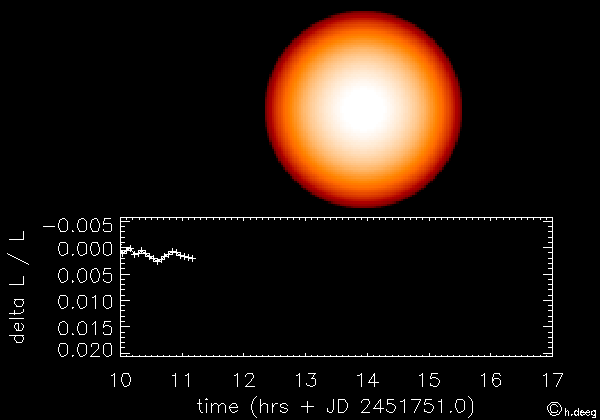
So are we looking for life on these planets?
Well, there is one drawback: almost all extrasolar
planets have masses similar to Jupiter's.
The two extrasolar planets which we know the
radius for are both known to be gas giant
planets -- their radii are like Jupiter's
and therefore they are big gas balls like Jupiter.
We know this because if we know the mass (from
the extrasolar planet detection) and we know
the radius, then we know the density, and
the densities turn out to be the densities
of gasses and not rock.

If these planets are big gas balls then
maybe they can't support life
(as we know it):
no surfaces, no liquid water, perhaps
no concentration of heavy elements
(carbon, nitrogen)?
Although
there is
evidence for at least one gas planet
containing carbon and oxygen.